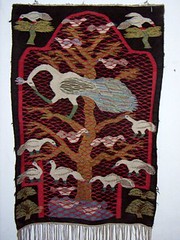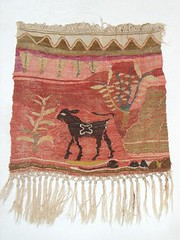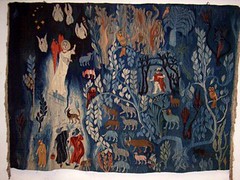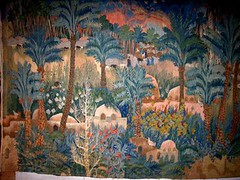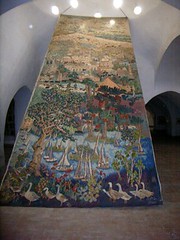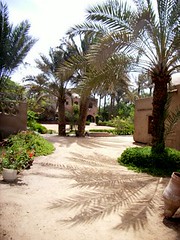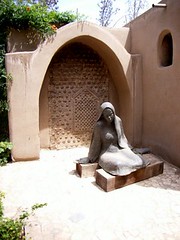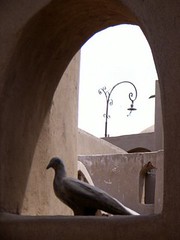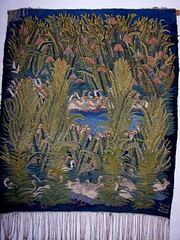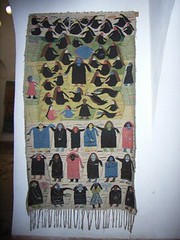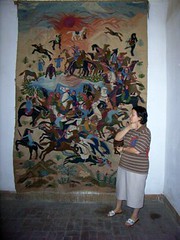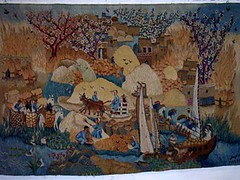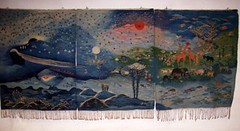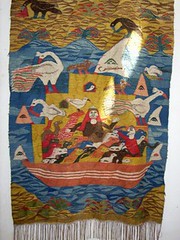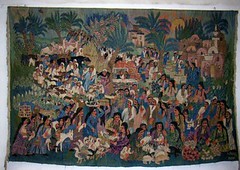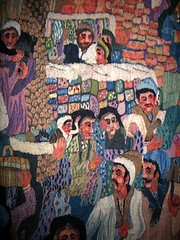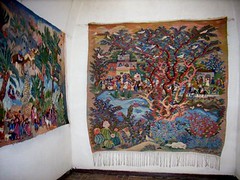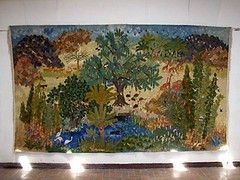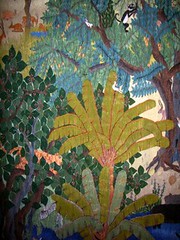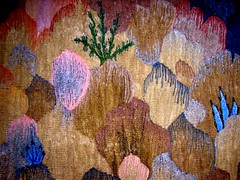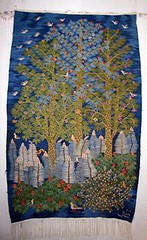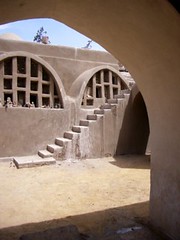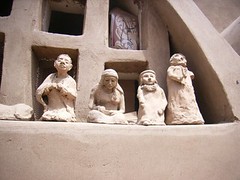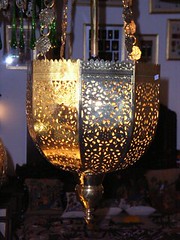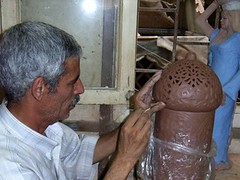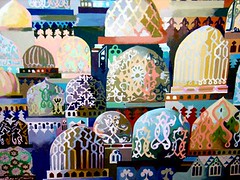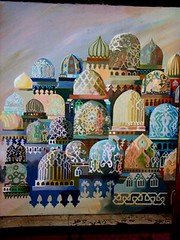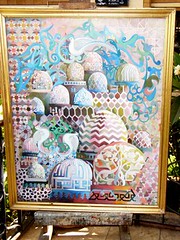The Good Oil
 Monday, May 23, 2005 at 03:17PM
Monday, May 23, 2005 at 03:17PM I needed sewing machine oil the other day. My new machine started flashing an oil light. I had a quilt deadline to meet. According to the book, my machine needed to be cleaned and oiled. I cleaned it. Oil had come with the machine in a sealed bottle. I had used it once, and because I didn’t trust the new seal I had carefully propped it up into a box beside the machine. Then I had a sewing group upstairs and my lovely housekeeper, Veronica, had joined me for the last of the ‘cleaning up flurry’.
I couldn’t find it. I searched every possible place, and some that were not so possible.
I gave in and tried to find alternative sources. Two friends had machines, but neither had oil.
The guide books didn’t mention sewing machines.
I decided that the only possibility was Medan Abata which has a huge number of tiny hardware shops. Think of Bunnings fragmented into six hundred tiny shops, except that most of them have almost the same stock.
I booked a taxi, and was waiting the hour or so that he said he would be when a friend from the embassy rang. Our husbands were both out and working (and yes, it was a weekend, even here ) so she decided to come with me.
We were dropped at the entrance to a very large and very active market. We had to walk through the shoe section, then the cheap t-shirts, then the underwear. Spruikers were everywhere, it was just starting to get dark, but lit from all the shop windows.
We hesitated over some very roundly padded bras in hot pink with green lace, and I was caught surreptitiously admiring some very large white knitted y-fronts. It is odd being in a very different culture which is known for its modesty, then suddenly finding all their undergarments laid out, hung up and spread before you in very large quantities. It is actually hard to look at the men around without wondering which are wearing y-fronts and which have the white boxers that look like baggy Aussie stubbies.
There was a ‘sexy’ underwear suq in Damascus that had matching sets of bras and pants covered in sequins or feathers, and each set was all of three Australian dollars. I had often bought them when we lived there, not for myself but because they were a very light gift to post for friends in Australia, and I would send them as a bit of a joke. At one stage I asked one of the men who sold them who usually bought them. He said “Our women”. I must have looked a bit surprised, as I had noticed a lot of women in the suq but thought them middle aged and well covered in clothing.
I realise now that in fact they were probably younger than I am now. He gave me a very straight look, and said “You westerners just look at our women and you see the mountain. Underneath they are volcanoes.” It has been a lesson I often remember not to judge from what is on the surface.
We moved on through the suq, and went into the first of the hardware shops. I told him I needed oil, and mimed sewing on a machine. He reached into a glass case and offered me a circular saw, explaining that he only had little ones. Thank goodness for that, this seemed quite big enough.
At this point I realised that my miming wasn’t too good. I drew a little sewing machine, pointed to it, and said “zeit” – which is Arabic for oil. He nodded furiously, and took my little book, and carefully drew a tiny oil bottle beside the machine, with a long thin nozzle and half filled with horizontal dashes.
I asked him where I could get oil and he took me to the door, pointed and indicated straight ahead, then left, then right. I asked him to write in Arabic ‘sewing machine oil’ and he did.
Off we went. I have learnt by experience that you check and recheck directions. It is an interesting thing in the Middle East, that no-one admits not knowing where things are. They will direct you with great certainty, but you can be going in absolutely the wrong direction. We checked, and others sent us in the same direction, and said the same name. I couldn’t work out if it was a company or a street, but it didn’t seem to be a street. One man took my drawing, with the words for sewing machine oil in Arabic, and wrote again. Then he indicated that he had written the address for us to show people.
We spoke to so many people and there was such a wonderful feeling of warmth and humour from those who helped us. It was a wonderful market area, huge and winding, a labyrinth, but it felt very safe and very friendly.
We were obviously getting close, as the last man had just pointed to an area a bit further down the road.
Believe it or not, it was a sewing machine shop. I doubt if anything there was produced any later than forty years ago. Most of the machines were really old. Beautiful old Singers, with black enamel and gold decals – where they hadn’t worn off – and even one with a fiddle base. Some were obviously treadles, and some hand cranks, some were other brands, and there were a few Elnas. Best of all, every single machine moved like satin, with that beautiful effortless slide of a perfectly tuned and serviced machine.
We both bought oil. I am a little concerned as it was not in a Singer bottle. I am only reassured by the memory of those old machines and their beautiful movement.
I asked the price. He said three pounds. I reached for my purse. My friend didn’t have small money so I pulled out six pounds to pay for both, a five, and a one. He was horrified and gave me the one back, and change. They were three pounds each, so we bought two bottles of oil for about a dollar and fifty cents.
Best of all, we left there and found a second hand book market which was brilliant. I have been desperate for reading material, and this was wonderful. I bought a huge bag of books in English. Some I would not have bothered with in Australia, but I am so desperate for reading that I have been reading anything.
As we left my friend’s scarf slipped off and fell. Neither of us noticed and we were at the edge of the curb and waiting for a cab when someone called out, ran to us and pushed the scarf into her hands.
It was a great day, and sometimes small things can leave you so warm and happy.
